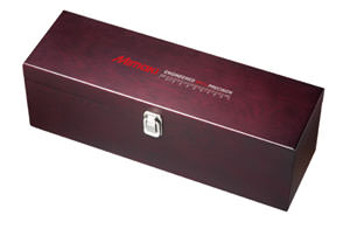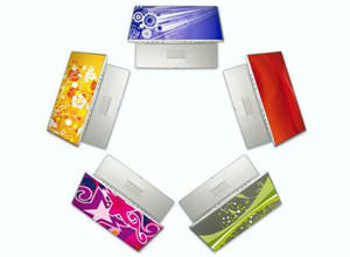 Mimaki-Wooden-box-(dark) |
 Mimaki-Laptops |
 Mimaki-UJF-3042HG |
Mimaki is set to release its UJF-3042HG flatbed desktop LED UV inkjet printer at FESPA Digital this month. It’s also likely to showcase the following month at Sign & Digital UK. Maximum height for printing materials is expanded to 150mm and Mimaki has also added the capability to benefit from six-colour plus white printing by incorporating two additional ink slots.
“The introduction of the UJF-3042HG underscores our commitment to continuing innovation in the development of wide format printing products,” said Mike Horsten, marketing manager of Mimaki Europe. “This desktop LED UV inkjet printer expands the thickness of materials that can be used for print to 150mm. Even most larger, more expensive printers can only print on materials with a thickness of up to 51mm, making this a huge breakthrough for the industry. The printer can print directly on A3 media [420 x 297mm].”
A key innovation is the UJF-3042HG’s ability to print on substrates that are impossible to use in a conventional model such as plastic, metals and wood. This, Mimaki believes, will open up significant business opportunities for end users. Another differentiating factor for this printer is its small environmental footprint as well as long-life, low power consumption LED curing. Two print channels have been added to enable six-colour printing plus white and clear inks. This produces attractive, higher definition output with high quality gradations that cannot be achieved as easily with four-colour printing. The addition of white and clear inks is designed to add value to printed products by providing under/over-coating on transparent or coloured materials, as well as gloss or matte finish.
Mimaki is distributed in the UK and Ireland by Hybrid Services whose national sales manager, John de la Roche, said: “Adding the ‘HG’ model to the Mimaki UJF-3042 product line-up provides customers with even greater choice depending on their application. With tangible performance and process advantages, Mimaki’s UV print capabilities are unsurpassed, so it’s well worth a visit to the upcoming spring exhibitions just to see them in action!”
The Mimaki UJF-3042HG also features a newly developed white ink circulation system that prevents pigment sedimentation and incorporates a nozzle recovery function that temporarily restores print quality, reducing potential downtime should maintenance issues arise.
Yet another interesting feature is its automated primer function: Mimaki’s PR-100 inkjet primer can be applied through the inkjet system, as opposed to the previous manual application method. This primer improves adhesion and allows the use of materials that are not necessarily optimised for inkjet production without affecting the look and feel of the substrates. Inline application allows for improved registration and faster production times – spot priming only the areas of substrate that will be accepting ink means less primer needs to be consumed, reducing costs while ensuring quality remains high.
The Mimaki UJF-3042HG supports three different ink types in addition to the primer:
• Mimaki LH-100 hard UV ink for scratch and chemical resistance as well as colour reproduction.
• Mimaki LF-200 flexible UV ink enables stretching of ink up to 200 per cent (new to the UJF 3042 family).
• Mimaki LF-140 offers strong gradation in six-colour printing (CMYK + LcLm) and is more flexible than LH-100 hard ink.
Opaque white and high gloss/matte clear inks are also available.
“Gloss and matte inks add significant value to the printed product,” says Horsten. “These inks enable the designer to highlight specific areas of the piece, making images literally pop off the page and adding other special effects to increase both quality and production value. White ink, of course, is a critical component of printing in the sign and display industry, especially when using transparent or dark substrates.
“Our opaque white ink meets both requirements – blocking the transmission of light through transparent materials so that the overprinted colour stands out resulting in a broader colour gamut, as well as providing full coverage over darker materials, delivering a crisp image without any muddiness. We believe the ability to print using both white and clear inks on a desktop device is a first in the industry and we are proud to bring this capability to market,” he concluded.
Copyright © 2011, DPNLIVE – All Rights Reserved


































































































